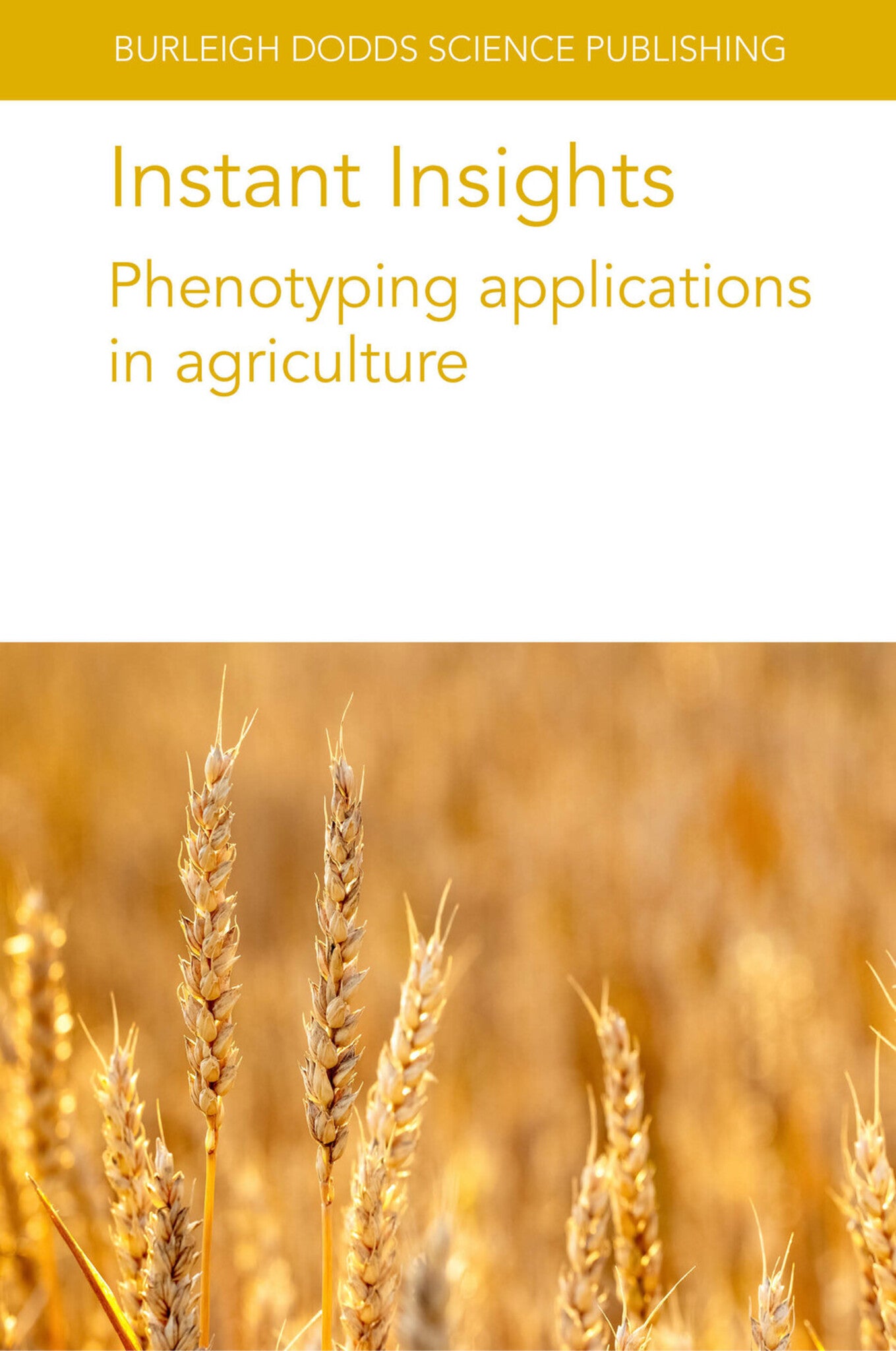We're sorry. An error has occurred
Please cancel or retry.
Instant Insights: Phenotyping applications in agriculture

Some error occured while loading the Quick View. Please close the Quick View and try reloading the page.
Couldn't load pickup availability
- Format:
-
23 January 2024

This book features five peer-reviewed reviews on the different applications of phenotyping techniques across agriculture.
The first chapter outlines how plant phenotyping has developed over recent decades, driven by factors such as advances in optical sensors, image analysis and automation as well as multidisciplinary cooperation in establishing facilities for high-throughput plant phenotyping.
The second chapter reviews the importance of phenotyping in plant breeding programmes and considers the role of phenomics in boosting the genetic gain in grain yields. Using high-throughput phenotyping techniques as a cost-efficient method for phenotypic data acquisition is also discussed.
The third chapter examines recent advances in phenotyping to identify drought-resistance traits in cereal roots. It also reviews current root phenotyping strategies and challenges.
The fourth chapter considers the application of phenotyping techniques based on existing plant cohort research in plant factories with artificial lighting (PFALs). The chapter also explores the possibility of plant phenotype-based environmental control in PFALs.
The final chapter provides an overview of the imaging techniques used in seed phenotyping, focussing primarily on the recent advances in X-ray imaging and the main parameters required to produce optimal image data.

TECHNOLOGY & ENGINEERING / Agriculture / Agronomy / Crop Science, Agronomy and crop production, TECHNOLOGY & ENGINEERING / Agriculture / Sustainable Agriculture, SCIENCE / Life Sciences / Horticulture, Plant biology, Sustainable agriculture, Commercial horticulture

- Chapter 1 - Origins and drivers of crop phenotyping: Roland Pieruschka and Ulrich Schurr, Institute for Bio- and Geosciences (IBG), IBG-2: Plant Sciences, Forschungszentrum Jülich, Germany;
- 1 Introduction
- 2 Technological progress in plant phenotyping
- 3 Community integration in plant phenotyping
- 4 Plant phenotyping as a tool for enhanced and sustainable crop production
- 5 Future trends
- 6 Where to look for further information
- 7 Acknowledgements
- 8 References
Chapter taken from: Walter, A. (ed.), Advances in plant phenotyping for more sustainable crop production, Burleigh Dodds Science Publishing, Cambridge, UK, 2022, (ISBN 978 1 78676 856 8)
- Chapter 2 - Advances in seed phenotyping using X-ray imaging: Sherif Hamdy, Aurélie Charrier and Laurence Le Corre, GEVES, France; Pejman Rasti, Université d’Angers and École d’ingénieur Informatique et Environnement (ESAIP), France; and David Rousseau, Université d’Angers, France;
- 1 Introduction
- 2 Sample preparation
- 3 Projection acquisition
- 4 Image reconstruction
- 5 Image processing
- 6 Conclusion and outlook
- 7 Future trends
- 8 Where to look for further information
- 9 References
Chapter taken from: Walter, A. (ed.), Advances in plant phenotyping for more sustainable crop production, Burleigh Dodds Science Publishing, Cambridge, UK, 2022, (ISBN 978 1 78676 856 8)
- Chapter 3 - Using phenotyping techniques to predict and model grain yield: translating phenotyping into genetic gain: Thomas Vatter and José L. Araus, University of Barcelona and AGROTECNIO (Center for Research in Agrotechnology), Spain;
- 1 Introduction
- 2 Boosting genetic gain in grain yield by focusing on phenomics
- 3 Stomatal conductance
- 4 Functional stay green
- 5 Case study
- 6 Conclusion and future trends
- 7 Where to look for further information
- 8 References
Chapter taken from: Tuberosa, R. (ed.), Developing drought-resistant cereals, Burleigh Dodds Science Publishing, Cambridge, UK, 2024, (ISBN 978 1 78676 985 5)
- Chapter 4 - Advances in phenotyping to identify drought-resistance traits in cereal roots: John (Jack) Christopher, University of Queensland QAAFI, Australia;
- 1 Introduction
- 2 Root phenotyping strategies and challenges
- 3 Root traits to improve drought adaptation in cereals
- 4 Phenotyping in controlled conditions: ex-situ
- 5 Field phenotyping
- 6 Three-dimensional imaging and root interactions with the soil
- 7 Imaging and trait data extraction
- 8 Above ground correlated traits in the field
- 9 Trait by environment interactions
- 10 Phenotyping methods for genomic selection and molecular breeding
- 11 Case study: Late, deep root development in sub-tropical wheat
- 12 Conclusion and future trends
- 13 Where to look for further information
- 14 Acknowledgements
- 15 References
Chapter taken from: Kozai, T. and Hayashi, E. (eds.), Advances in plant factories: New technologies in indoor vertical farming, Burleigh Dodds Science Publishing, Cambridge, UK, 2023, (ISBN 978 1 80146 316 4)
- Chapter 5 - Plant phenotyping of individual plants towards optimal environmental control in plant factories: Eri Hayashi, Japan Plant Factory Association, Japan;
- 1 Introduction
- 2 Current challenges with plant factories with artificial lighting
- 3 Plant phenotyping
- 4 Plant phenotyping in plant factories with artificial lighting
- 5 Plant cohort research in plant factories with artificial lighting
- 6 Phenotype-based environmental control in plant factories with artificial lighting
- 7 Conclusion
- 8 Acknowledgements
- 9 References
Chapter taken from: Buitink, J. and Leprince, O. (eds.), Advances in seed science for more sustainable crop production, Burleigh Dodds Science Publishing, Cambridge, UK, 2022, (ISBN 978 1 78676 917 6)



